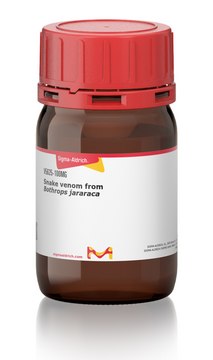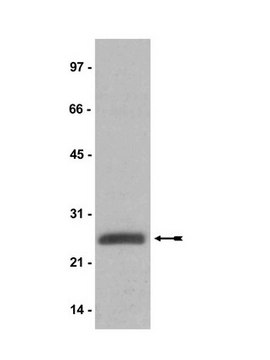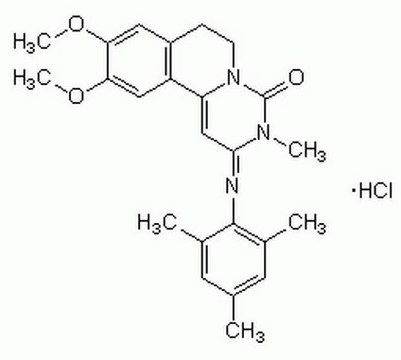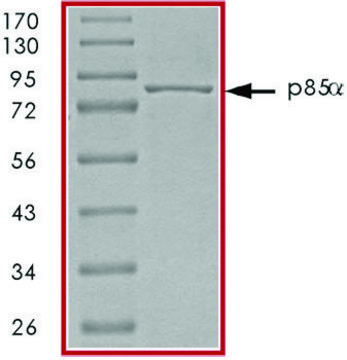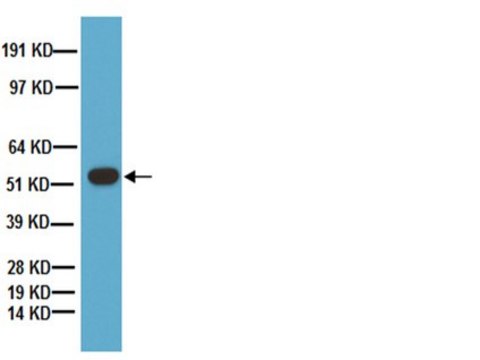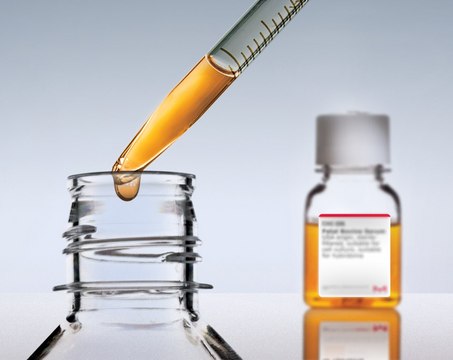04-142
Anti-IRF4 Antibody, clone 3E4
clone 3E4, from rat
Sign Into View Organizational & Contract Pricing
All Photos(2)
Synonym(s):
Interferon regulatory factor 4, IRF-4, Lymphocyte-specific interferon regulatory factor, LSIRF, NF-EM5, PU.1 interaction partner, Transcriptional activator PIP
UNSPSC Code:
12352203
eCl@ss:
32160702
NACRES:
NA.41
Recommended Products
biological source
rat
antibody form
purified antibody
antibody product type
primary antibodies
clone
3E4, monoclonal
species reactivity
human
species reactivity (predicted by homology)
mouse (based on 100% sequence homology)
technique(s)
flow cytometry: suitable
immunohistochemistry: suitable
western blot: suitable
isotype
IgG1κ
NCBI accession no.
UniProt accession no.
shipped in
wet ice
target post-translational modification
unmodified
Gene Information
human ... IRF4(3662)
mouse ... Irf4(16364)
General description
Interferon regulatory factor 4, also known as IRF4, belongs to the IRF family. IRF4 encodes a 450 amino acid polypeptide with a predicted molecular weight of 51.6 kDa (Grossman 1996). The IRF4 gene is expressed in the spleen, lymphocytes and melanocytes, and is induced in to T cells after cross linking with the T cell receptor. IRF4 is a transcriptional activator that binds to the interferon stimulated response element (ISRE) of the MHC class I promoter. IRF4 is essential for mature T and B lymphocyte function. IRF4 interacts with MYD88 to prevent the interaction of IRF5, resulting in negative regulation of Toll Like Receptor (TLR) signaling. High levels of IRF4 have been associated with Epstein Barr Virus (EBV) and may be critical to EBV transformation. Further oncogenic potential has been associated with the involvement of IRF4 with hair color and pigmentation of the skin, which may cause multiple myeloma.
Immunogen
GST-tagged recombinant protein corresponding to the C-terminus of mouse IRF4.
Application
Anti-IRF4 Antibody, clone 3E4 is a highly specific rat monoclonal antibody, that targets IRF4 & has been tested in western blotting, IHC & Flow Cytometry.
Immunohistochemistry Analysis: A 1:50 dilution from a representative lot detected IRF4 in positive human tonsil tissues.
Flow Cytometry Analysis: A representative lot from an independent laboratory detected IRF4 in wildtype and IRF4 knockout mice (Zheng, Y., et al. (2009). Nature. 458(7236):351-356.).
Flow Cytometry Analysis: A representative lot from an independent laboratory detected IRF4 in wildtype and IRF4 knockout mice (Zheng, Y., et al. (2009). Nature. 458(7236):351-356.).
Research Category
Inflammation & Immunology
Inflammation & Immunology
Research Sub Category
Transcription Factors
Transcription Factors
Quality
Evaluated by Western Blotting in Ramos cell lysate.
Western Blotting Analysis: 1 µg/mL of this antibody detected IRF4 in 10 µg of Ramos cell lysate.
Western Blotting Analysis: 1 µg/mL of this antibody detected IRF4 in 10 µg of Ramos cell lysate.
Target description
~51 kDa observed
Physical form
Format: Purified
Protein G Purified
Purified rat monoclonal IgG1κ in buffer containing 0.1 M Tris-Glycine (pH 7.4), 150 mM NaCl with 0.05% sodium azide.
Storage and Stability
Stable for 1 year at 2-8°C from date of receipt.
Other Notes
Concentration: Please refer to the Certificate of Analysis for the lot-specific concentration.
Disclaimer
Unless otherwise stated in our catalog or other company documentation accompanying the product(s), our products are intended for research use only and are not to be used for any other purpose, which includes but is not limited to, unauthorized commercial uses, in vitro diagnostic uses, ex vivo or in vivo therapeutic uses or any type of consumption or application to humans or animals.
WGK
WGK 1
Flash Point(F)
Not applicable
Flash Point(C)
Not applicable
Certificates of Analysis (COA)
Search for Certificates of Analysis (COA) by entering the products Lot/Batch Number. Lot and Batch Numbers can be found on a product’s label following the words ‘Lot’ or ‘Batch’.
Already Own This Product?
Find documentation for the products that you have recently purchased in the Document Library.
Ye Zheng et al.
Nature, 458(7236), 351-356 (2009-02-03)
In the course of infection or autoimmunity, particular transcription factors orchestrate the differentiation of T(H)1, T(H)2 or T(H)17 effector cells, the responses of which are limited by a distinct lineage of suppressive regulatory T cells (T(reg)). T(reg) cell differentiation and
Our team of scientists has experience in all areas of research including Life Science, Material Science, Chemical Synthesis, Chromatography, Analytical and many others.
Contact Technical Service
